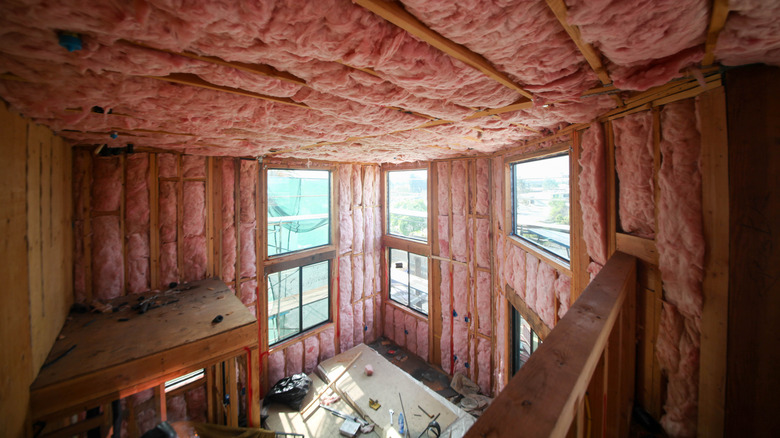Are The TikTok-Viral Arched Niches Worth Cutting Into Your Wall For?
How far would you go to add a little touch of the Mediterranean to your interior decor? TikTok DIYer Alaina Kathleen Ford (@alainakathleenhome) posted a series of videos in which she created her "most controversial DIY": two arched niches, inset between the studs of her dining room wall. It might not have seemed like a particularly gutsy thing to do at the time; recessed cabinets in bathrooms are completely ordinary, after all. But Ford's project seemed to trigger some TikTok users who objected to everything, from the very fact of having drywall to her handling of fiberglass insulation and using Ryobi tools. The video has been watched 35.3 million times to date, and perhaps 35 million of those views were by eight guys trying to figure out if she almost cut through a water or electrical line. Comments swung wildly between concern, trolling, genuine curiosity, and support from other DIYers. Let's parse it all, starting with the basic question: Was this project a good idea? Quick answer: yes.
Before we dig into the construction critiques, let's dispense with the tool snobbery. Ford uses Ryobi tools, and they seem to have served her without fail. We have used Ryobi tools, including trying the cheapest cordless drill at Home Depot, and have universally liked them. A tool that gets the job done is the right tool; a tool purchased to impress your TikTok followers might be an enormous waste of money.
Winning the wall wars
But not everyone is averse to wasting money. Take, for example, the shockingly large number of Europeans who let Ford know that their incredibly expensive homes are better than hers. Usually, this was phrased along the lines of "That won't work here because our walls aren't made of paper." Many of these comments originated from Germany and Spain, where masonry homes are the norm. And it's true that their new construction will probably outlast new houses in the U.S. lasting 400 years while the most well-built U.S. homes might only survive 300 years. But there are downsides to this admirable mode of construction. One is that you'll probably downsize your living arrangements a bit by your 300th birthday. Another is that residential construction in Germany can take three times as long to complete and cost 50% more. This is a serious problem because almost half of Europeans in the 18- to 34-year-old demographic still live at home due to high housing costs.
But none of this has anything to do with Ford's project. The construction of exterior walls is irrelevant; it might be a bad idea to install a niche in an exterior wall, but Ford didn't do that. The presence of a vapor barrier and insulation might have convinced her critics she was cutting into an exterior wall, but vapor barriers are commonly used in interior walls to control moisture, especially around bathrooms and kitchens, and insulation is used to limit sound.
That's not cotton candy inside your wall
But what about handling that insulation? Many were alarmed by Ford's wanton handling of her fiberglass insulation, claiming it was likely to both kill her and make her itch, presumably not in that order. But, while some fiberglass insulation can cause minor irritation, much modern fiberglass batt insulation is engineered to be itch-free. It's useful to determine what kind of insulation is in your walls, but no fiberglass insulation, as far as anyone knows, will kill Ford or anyone else. The worst case, according to the State of Washington, is that existing asthma or bronchitis might be aggravated by exposure to fiberglass. Mesothelioma.net says that this misunderstanding of fiberglass safety might come from confusing fiberglass with cancer-causing asbestos. Unlike asbestos, fiberglass has no known connection to mesothelioma or lung cancer, and it is not considered carcinogenic.
Of course, cutting into an electrical cable or water line can be hazardous, but Ford did neither. (If you're undertaking a niche of your own, it's a good idea to turn off the electricity and water in the area while you cut.) So we say: Bravo, Alaina Kathleen Ford. Cut holes in the interior walls all you want. If you find a vapor barrier in there, make sure to seal it back up after cutting. But it's all entirely up to you, and we trust your judgment.

